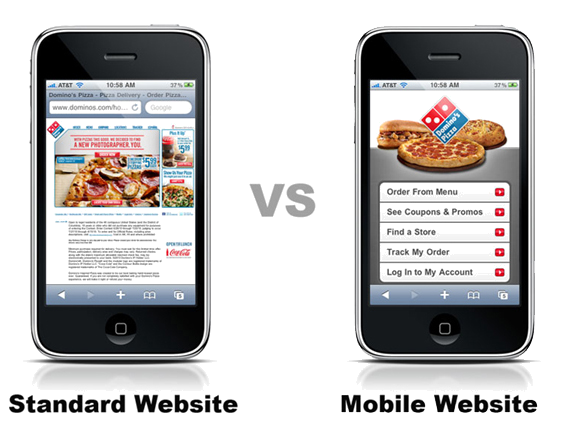
You may be hearing a lot of hype surrounding the current way mobiles are being used, and you’re probably wondering what effects this will have on you, if any at all. The truth is, the hype is there for a reason, and as tablet and smartphone usage slowly overtakes standard desktop or laptop usage, a lot is being changed to better adapt to this new state of connectedness, and this also includes general business practices.
Currently though, the ‘mobile era’ is still new, and while mobile web usage is predicted to outnumber desktop usage by 2015, a lot of businesses have not yet adapted to these changes. This doesn’t mean they shouldn’t though- almost three quarters* of mobile web users will prefer a mobile friendly web-page over one more suited for the desktop, and seeing as mobile web usage is so high, this isn’t something that should be ignored by a business that makes use of their online profile.
By creating a mobile website for your business now, you’ll be putting yourself directly above any competition that fails to provide mobile catered content, and you’ll be in a position to stop yourself from falling behind any other businesses that have already adapted to mobile technology.
When mobile traffic is at such a high level, (ex: around 45% of users in the UK will use mobile to access the internet.) and customer satisfaction is key to building a successful business, creating a mobile website that works in a customer’s palm is incredibly important.
You may already have a nice desktop website, but if this doesn’t feel suitable for a mobile device, and it most likely doesn’t, then building a compatible mobile website for smartphones and tablets will be needed. By integrating a mobile version into your website, you’re giving yourself and your customers a much easier to use web page that leaves the customer with a pleasant experience they are going to remember.
A mobile web page will ensure quick loading times, no malfunctioning on desktop optimized code such as JavaScript, no issues with scrolling, and quick access to available content and contact info. If you don’t have this at a customer’s hands the moment he or she opens up your web page, they are likely to go elsewhere.
The sooner you get a mobile website up and running, the better- a lot of businesses are catching up with the times and you’ll want to provide content your competition doesn’t have before they get it themselves. Having a mobile website will ensure you stay at the top of the mobile tidal wave, and not at the bottom when it comes crashing down.


 One of the great benefits of having a mobile website is being able to engage your site visitors through the use of built-in smartphone functionalities. With a well-made website, not only will you be able to showcase all of the information necessary for a potential customer in lightning quick speed, but you’ll also be able to embed widget-like functions that can be accessed with a smartphone.
One of the great benefits of having a mobile website is being able to engage your site visitors through the use of built-in smartphone functionalities. With a well-made website, not only will you be able to showcase all of the information necessary for a potential customer in lightning quick speed, but you’ll also be able to embed widget-like functions that can be accessed with a smartphone.